Military Knowledge: Almas Missile
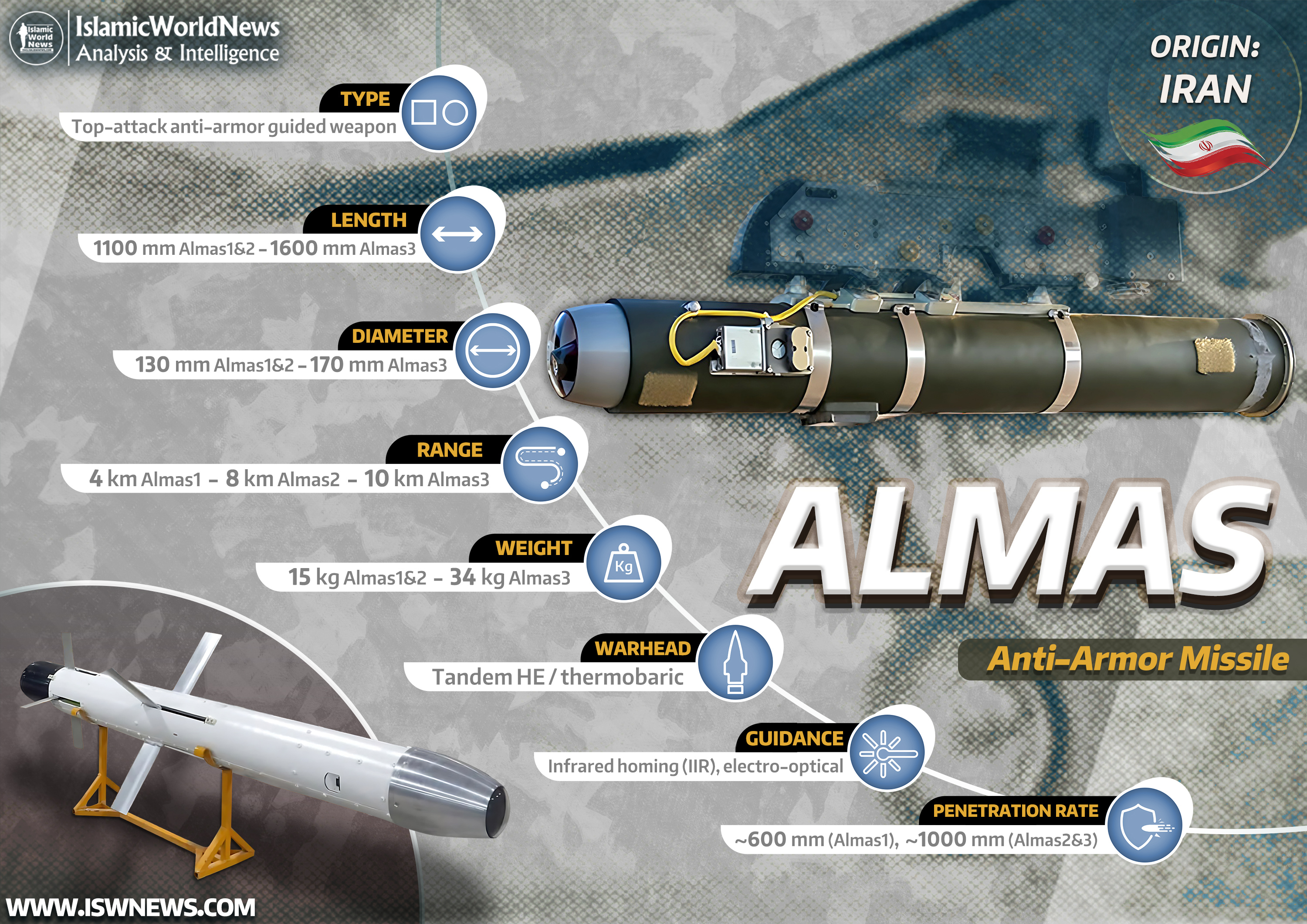
Almas (diamond) is an Iranian fire-and-forget short-range anti-armor and anti-personnel weapon that was produced by the Ministry of Defense of the Islamic Republic of Iran. Almas missile is known as the Iranian version of the Israeli Spike missile.
Almas anti-armor missile is an Iranian air-to-surface (air-launched) and surface-to-surface (ground-launched) missile, which is produced in three variants Almas-1, Almas-2 and Almas-3.
Almas missile was seen for the first time in spring 2020 during the mass delivery of UAVs to the Islamic Republic of Iran Army and was officially unveiled and fired by the Ababil 3 UAV during the army’s UAV exercise in the following January.
After the unveiling of the Almas missile and its similarity with the Israeli “Spike” missile, the attention of many military experts was drawn to this missile. Some experts believe that after the 2006 Israel–Hezbollah War, a number of Spike missiles fell into the hands of resistance fighters and these missiles were transferred to Iran, and Iranian experts reverse-engineered this missile and produced the Almas family of missiles.
Almas family missiles use a tandem-charge high-explosive anti-tank (HEAT) or thermobaric warhead. The Almas warhead is located just behind the camera at the tip of the missile. Almas missile guidance system is based on image infrared homing (IIR) and elctro-optical sensors.
The Almas missile is a top-attack missile and hits the weakest point in the armor from above and damages them. This greatly increases the efficiency of this missile. In addition, the Almas missile has a “fire and forget” capability; This helps in reducing the damage to the missile crew.
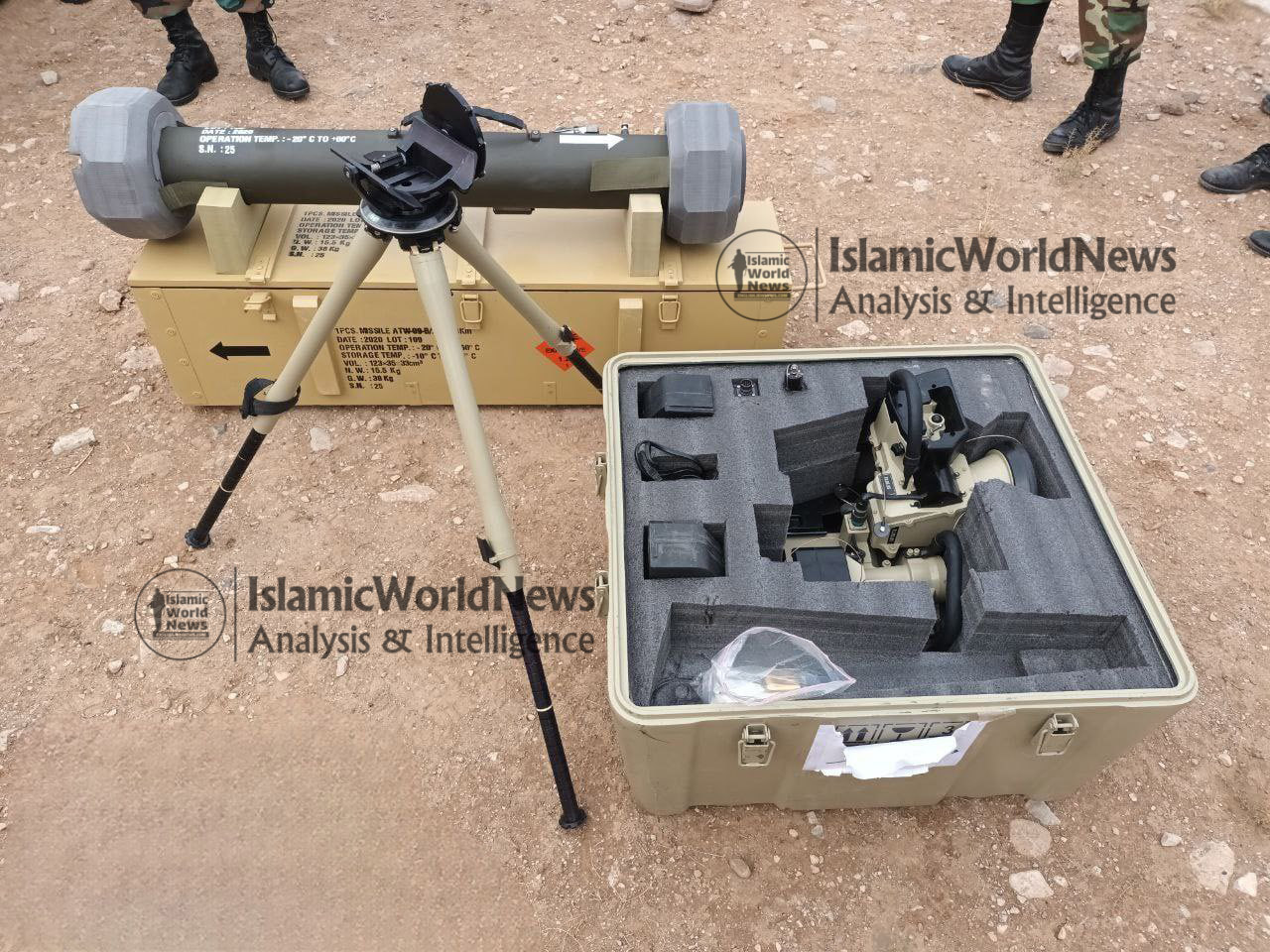

Due to the increase in defense technologies in modern battle tanks and the development of various active defense systems to deal with anti-tank missiles, the destruction of tanks has become more difficult. Israel is also a leader in this field with Trophy active protection system. By installing the Trophy active protection system on its most important tank, the Merkava Mark-4, Israel has made it difficult to destroy this tank with an anti-tank missile.
Read more: Military Knowledge: Trophy Active Protection System
The first solution to deal with the active protection system is to launch two anti-armor missiles in a short time interval to prevent the proper functioning of the defense system. Dehlavieh dual missile launcher is one of the smart solutions to counter and defeat the trophy active defense system produced by Iran. This system is produced in Hezbollah’s combat unit under the name of the Tharullah system, which has a function completely similar to the Dehlavieh dual missile launcher.
Read more:
Military Knowledge: Dehlavieh Dual Missile Launcher
Lebanon’s Hezbollah Unveils Tharallah Anti-Tank System (Video)
One of the other ways to deal with active defense systems is to attack the battle tank from above (top-attack) because most of the active defense systems do not have the ability to react against such attacks. Therefore, top-attack missiles are a good option to deal with these systems. For this reason, Iran started building and designing Almas missile by taking the example of Israeli Spike anti-armor missile.
Almas-1 missile:
Almas 1 missile is very similar to Spike LR anti-armor missile in terms of design and specifications. Almas-1 uses four fins with the same combination as the Toophan missile. In the Almas missile, a solid fuel engine with a hot gas outlet similar to the Toophan missile can be seen on its body. According to the images and announced specifications, this missile uses an image seeker and fiber-optic wire to find and destroy targets. The range of this missile is 4000 meters and it weighs 15 kg.
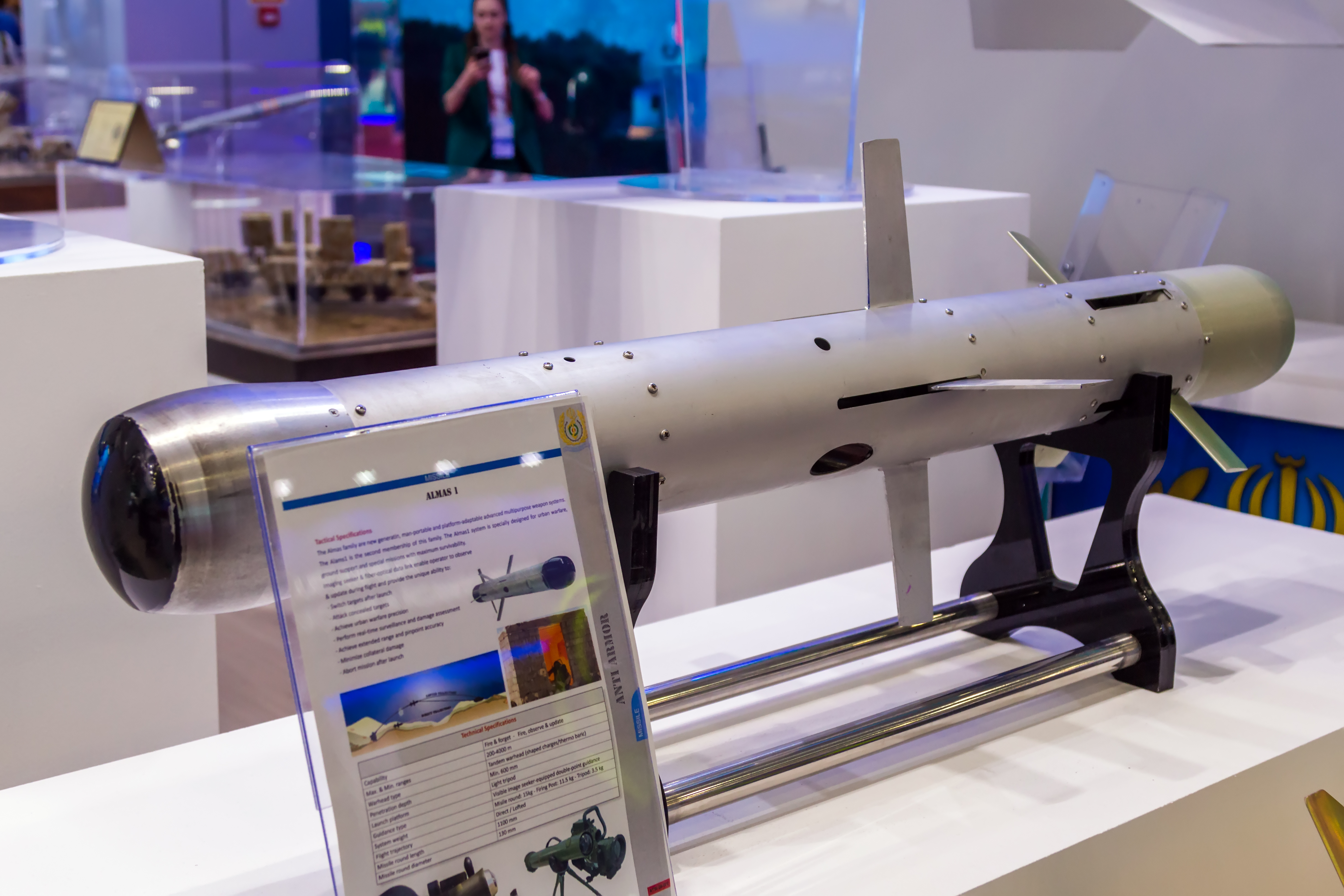
Almas-2 missile:
Almas 2 missile is a more advanced version of the Almas 1 missile, and its range has been increased to about 8,000 meters when fired from a ground-based launcher. This missile has the ability to penetrate 1000 mm of armor. Like Almas 1, this missile can be fired from ground and air launchers.

Almas-3 missile:
Almas 3 missile is the latest and newest version of the Almas family of missiles. Almas-3 is larger than Almas 1 and 2 and seems to have been sampled from the Spike ER missile. Considering that the configuration of Almas 3 and Spike ER are very similar to each other, it is likely that their specifications are also close to each other. Hence, Almas-3 probably has a range of about 10 km. The warhead of this missile is a two-stage high-explosive or thermobaric type, and it uses an infrared and electro-optical seeker for guidance and has the ability to penetrate 1000 mm of armor. Also, if the fiber-optic wire is replaced with RF link to guide this missile and fire it from aircraft, a range of about 16 km is envisioned for the Almas-3 missile.
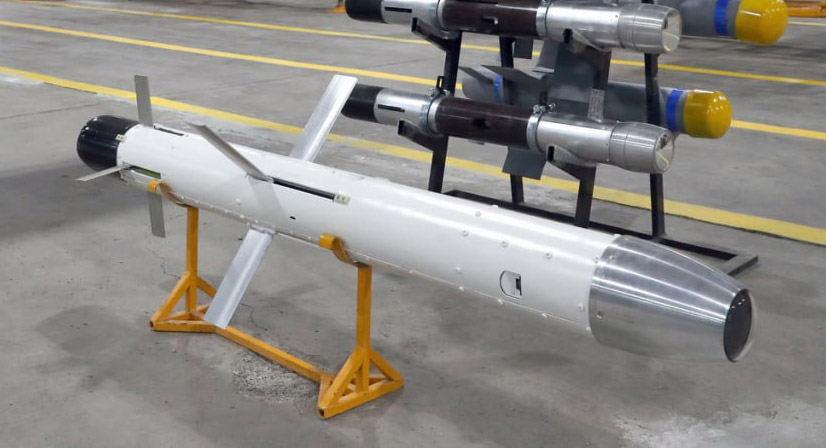
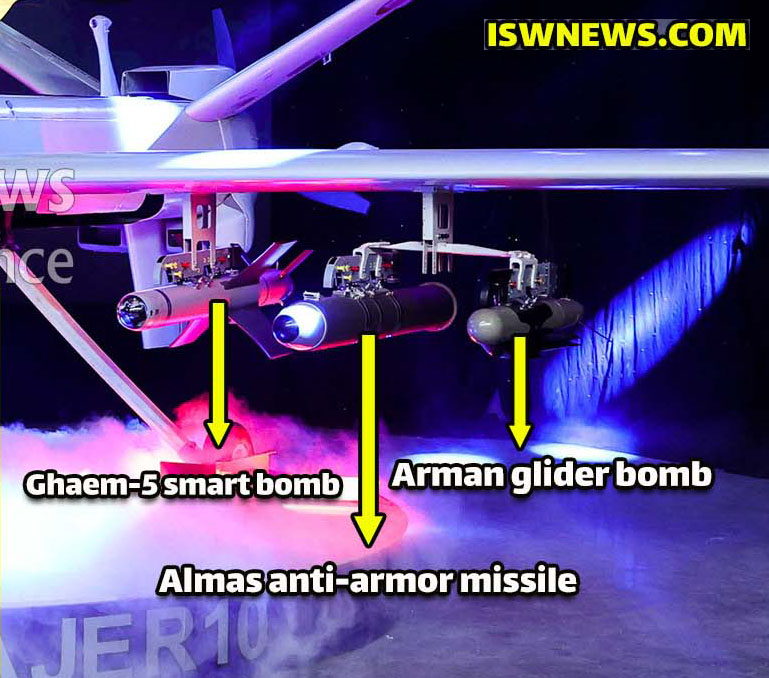
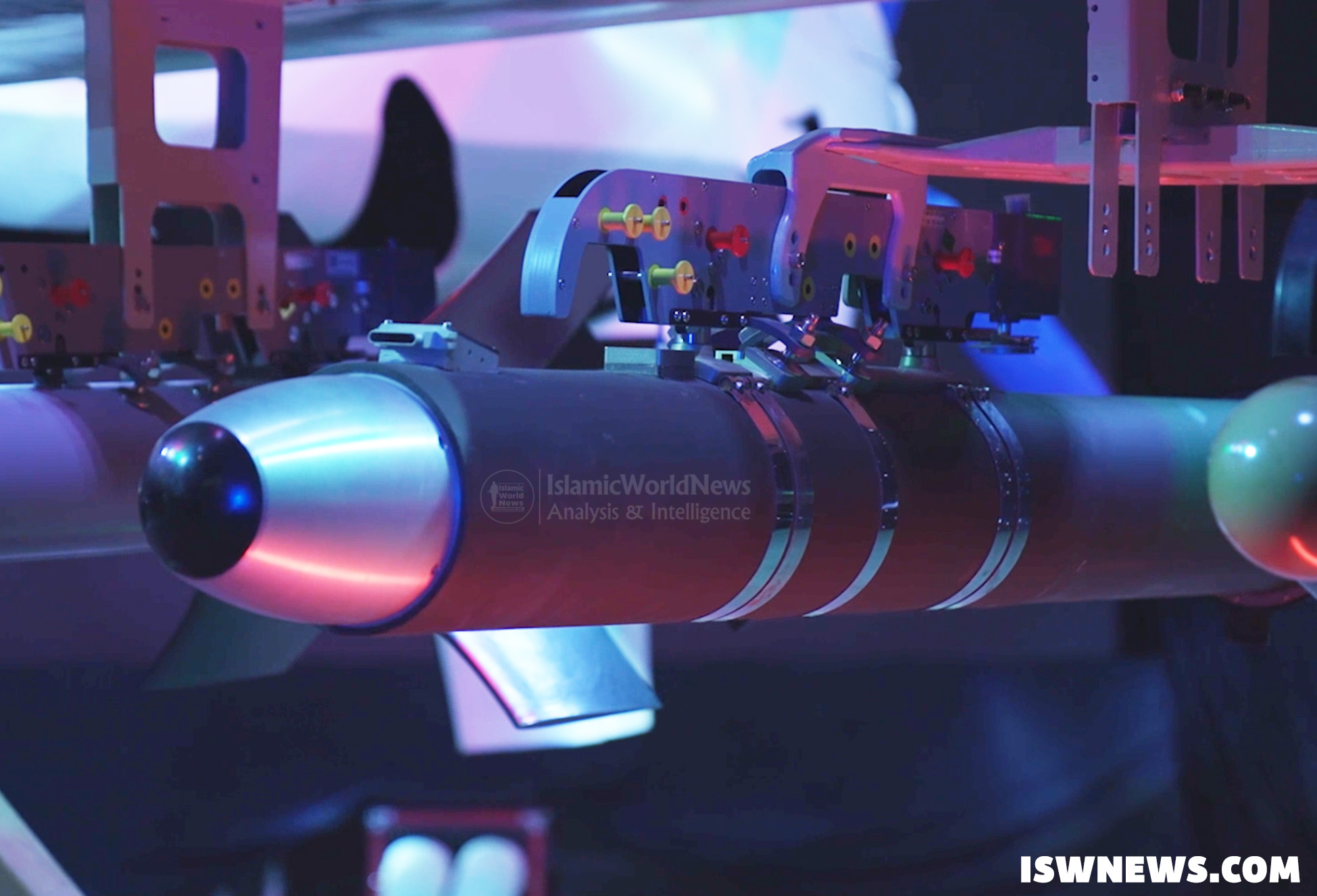
In the picture below, you can see the family of Almas missile in a frame. From left to right, the missiles are Almas-1, Almas-2 and Almas-3. In this picture, the similarity of appearance and dimensions of Almas 1 and 2 variants and the difference of their dimensions and appearance with Almas-3 missile are clearly visible.
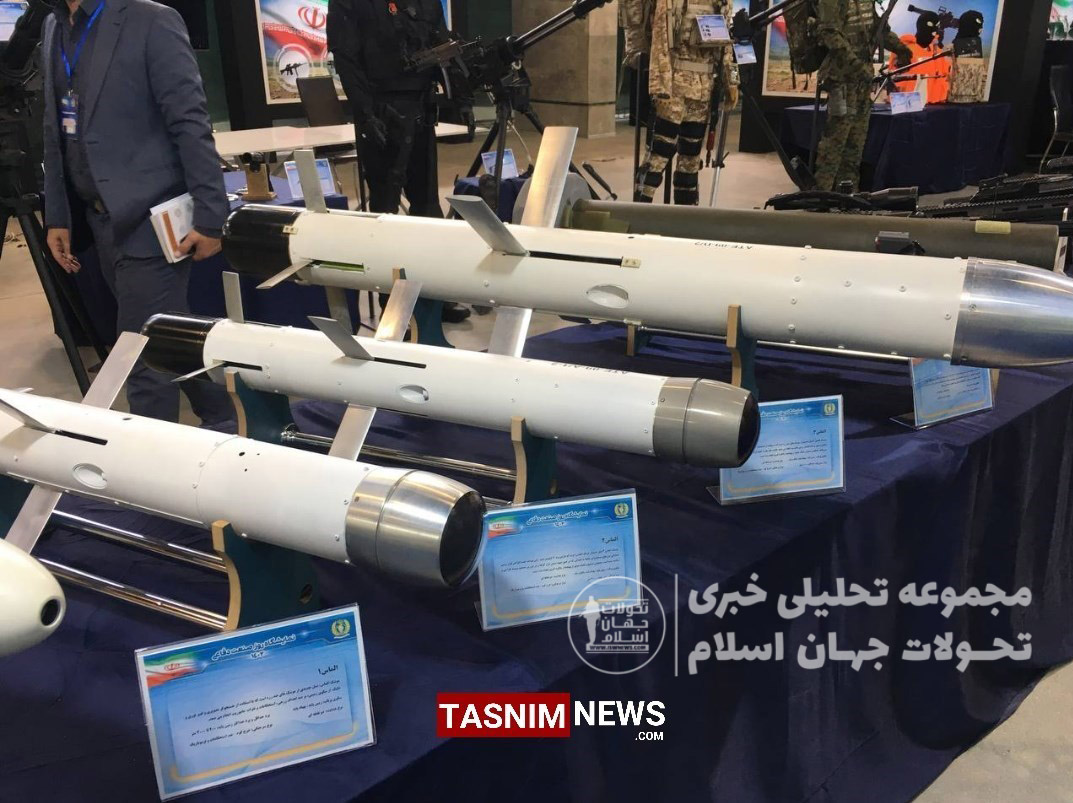
Almas missile specifications:
Type: Air-to-surface and surface-to-surface anti-armor missile
Length: 1100 mm Almas1&2 – 1600 mm Almas3
Diameter: 130 mm Almas1&2 – 170 mm Almas3
Range: 4 km Almas1 – 8 km Almas2 – 10 km Almas3
Weight: 15 kg Almas1&2 – 34 kg Almas3
Warhead: tandem-charge high-explosive/thermobaric
Armor penetration rate: ~ 600 mm (Almas1), ~ 1000 mm (Almas2&3)
Engine: Solid-propellant rocket
Guidance: Infrared homing (IIR) and electro-optical
Launch platform: ground-based launchers and aircraft
Origin: Iran


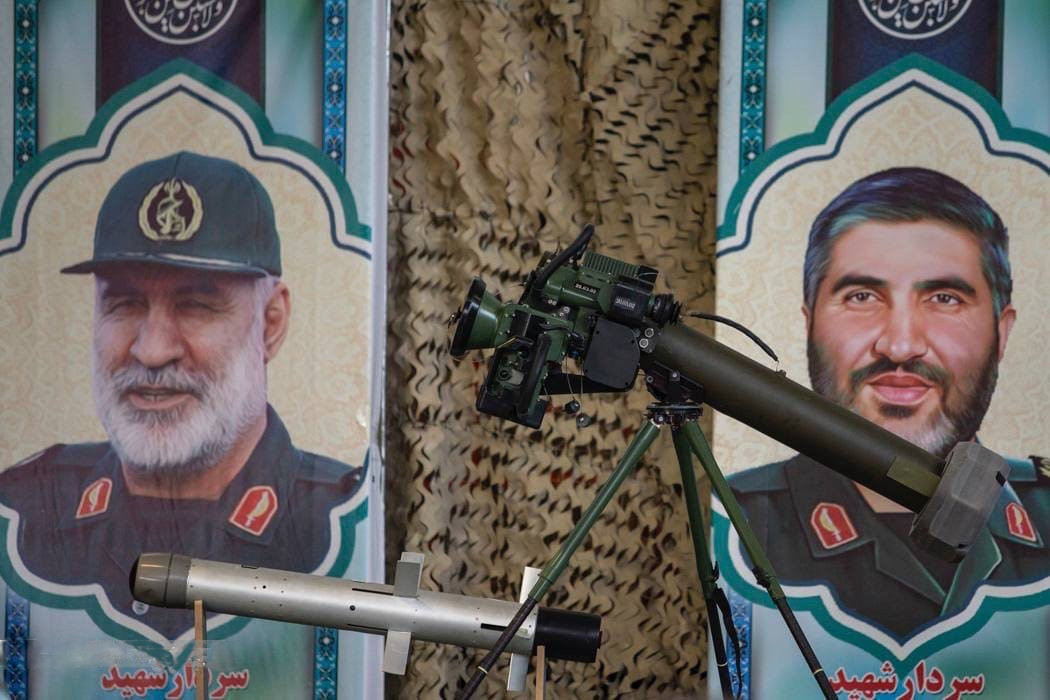
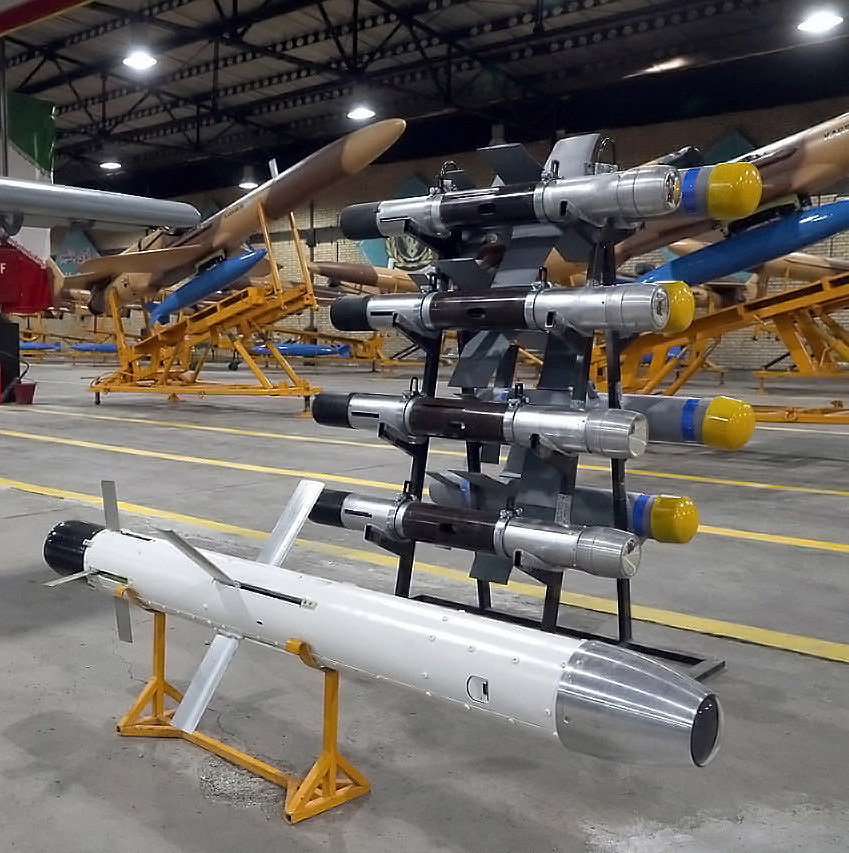
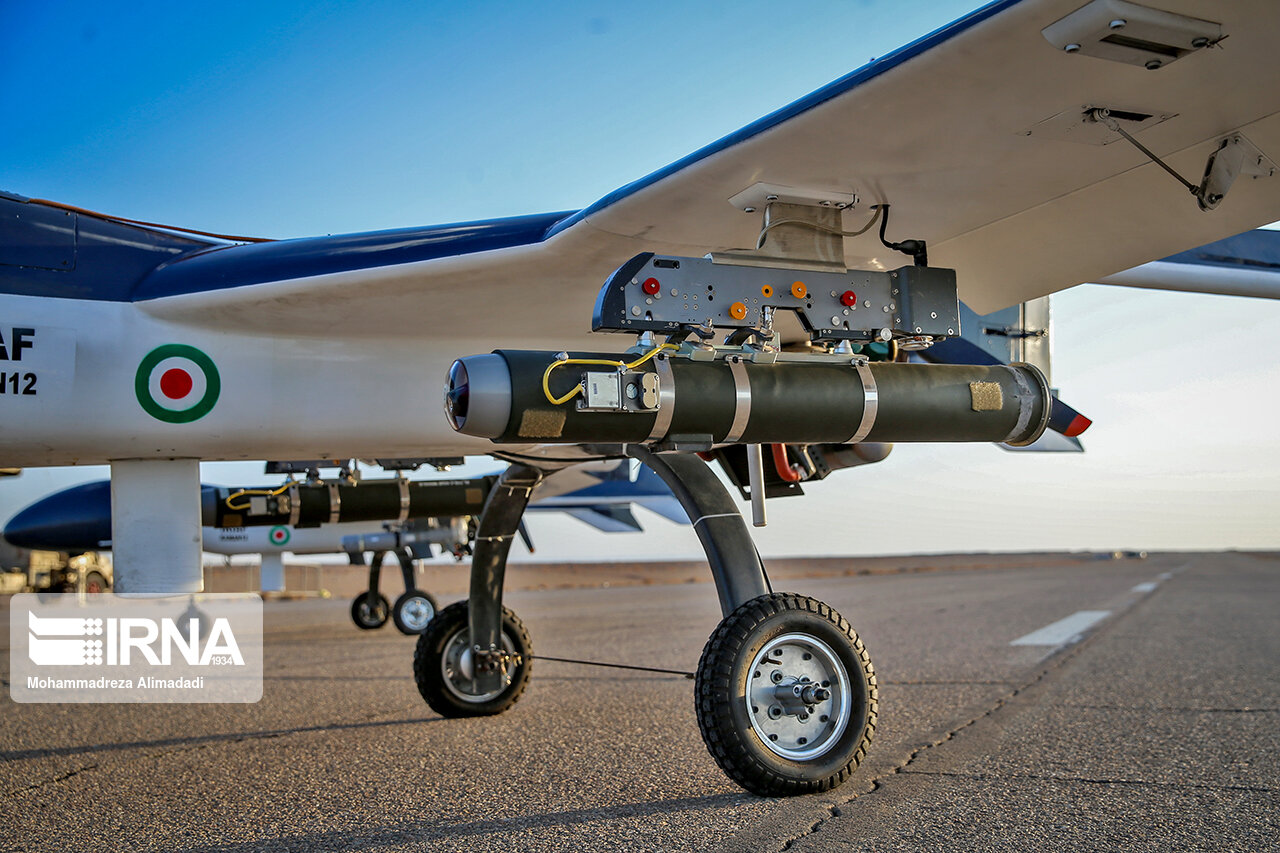

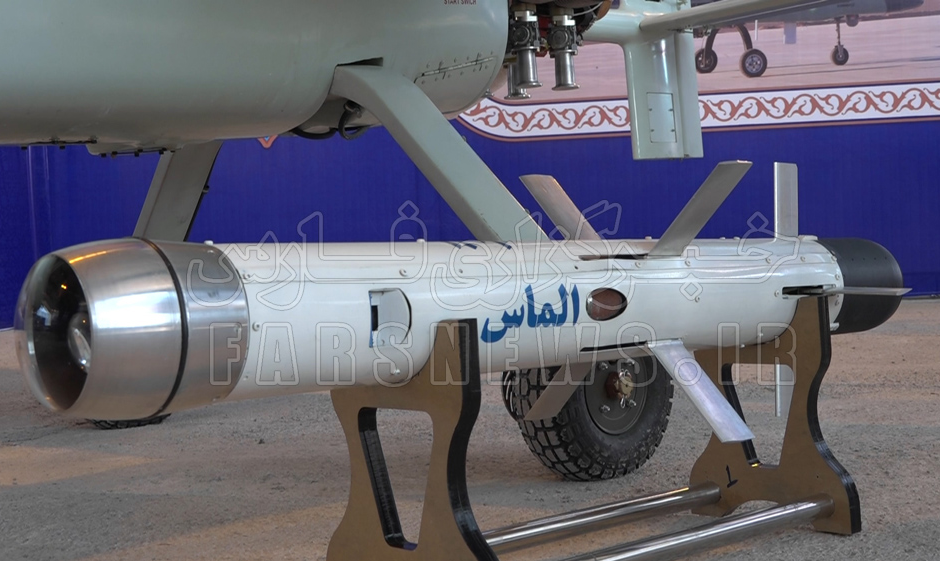
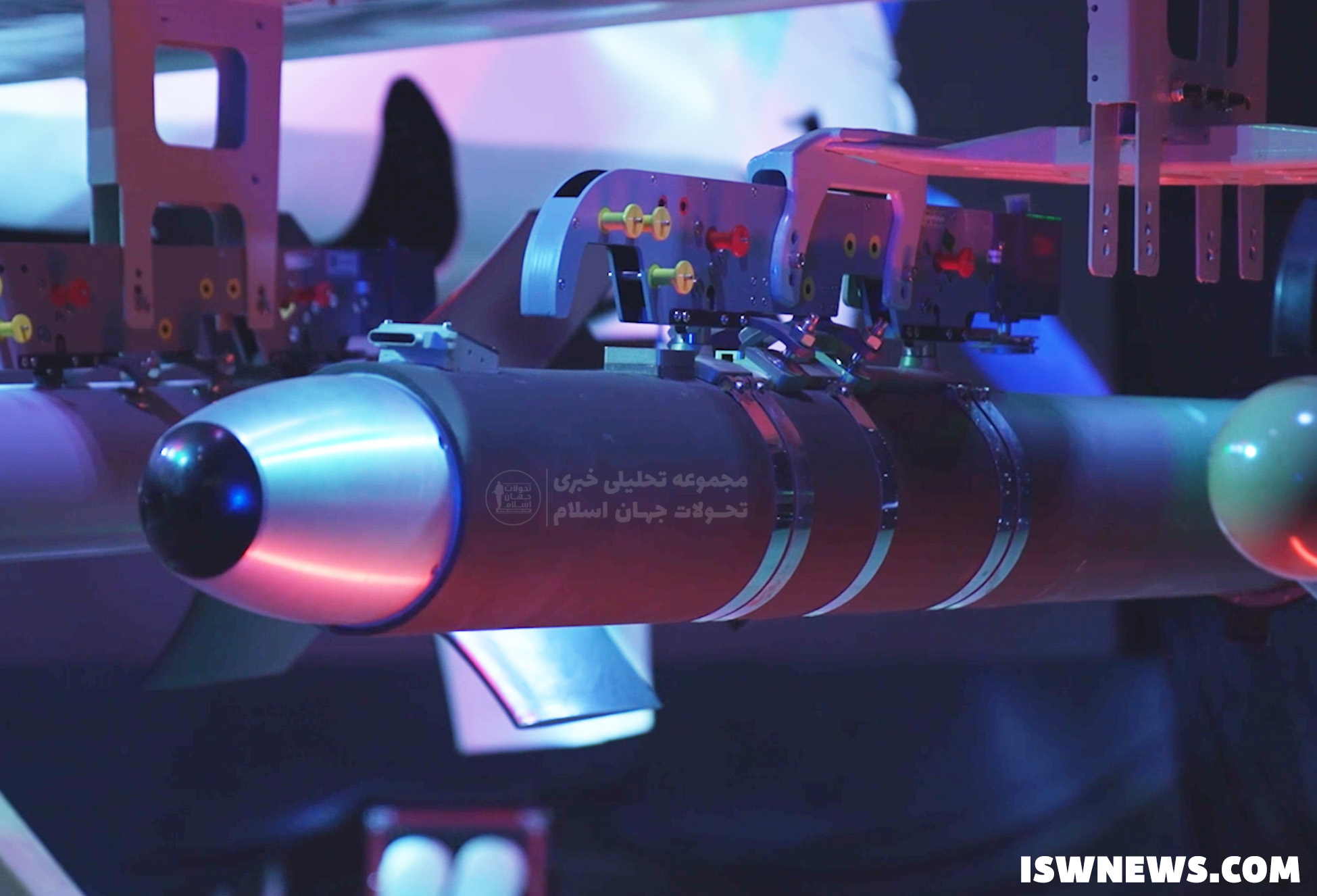

Infographics of Almas missile in Russian, Farsi, Arabic and Hebrew:

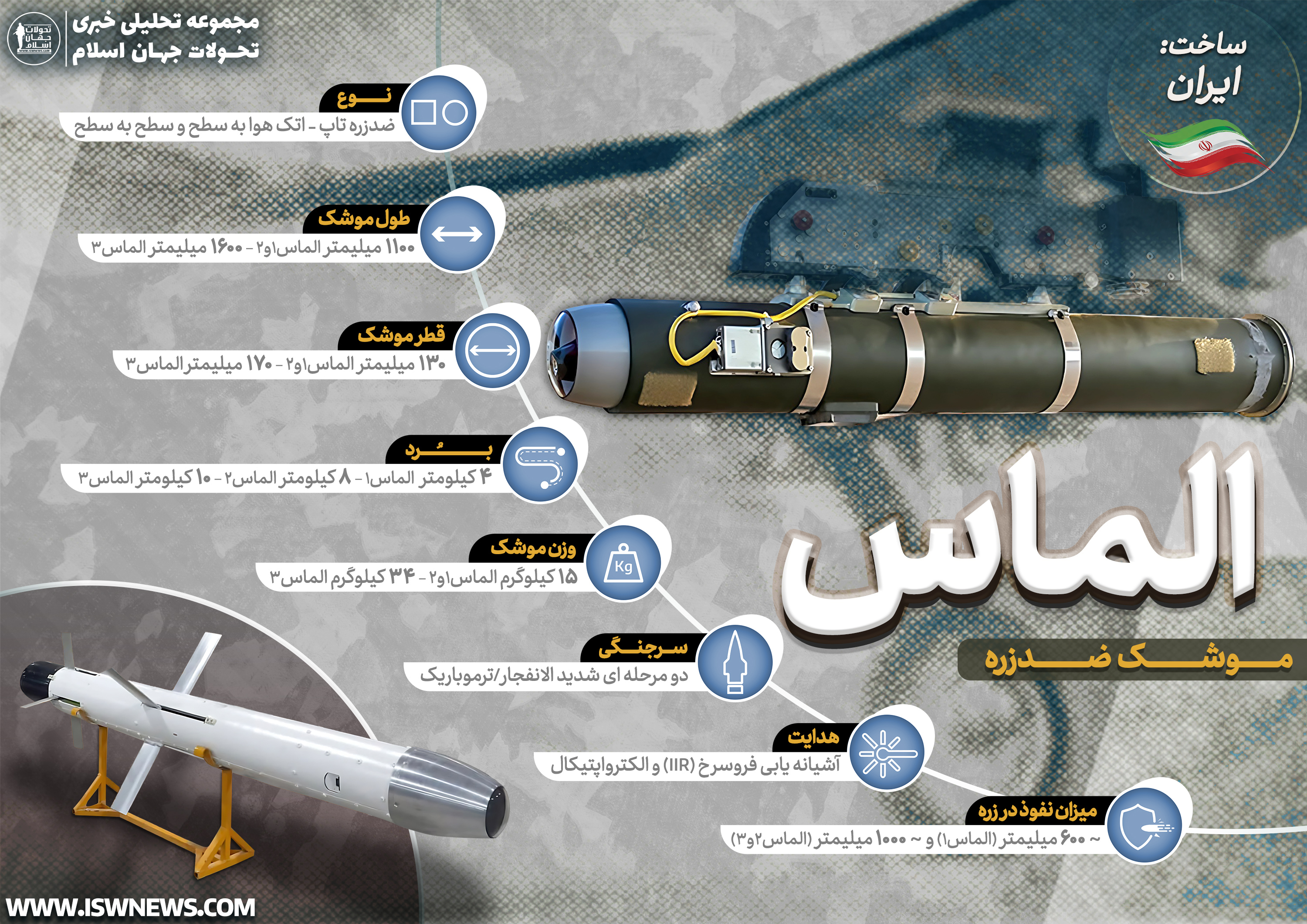
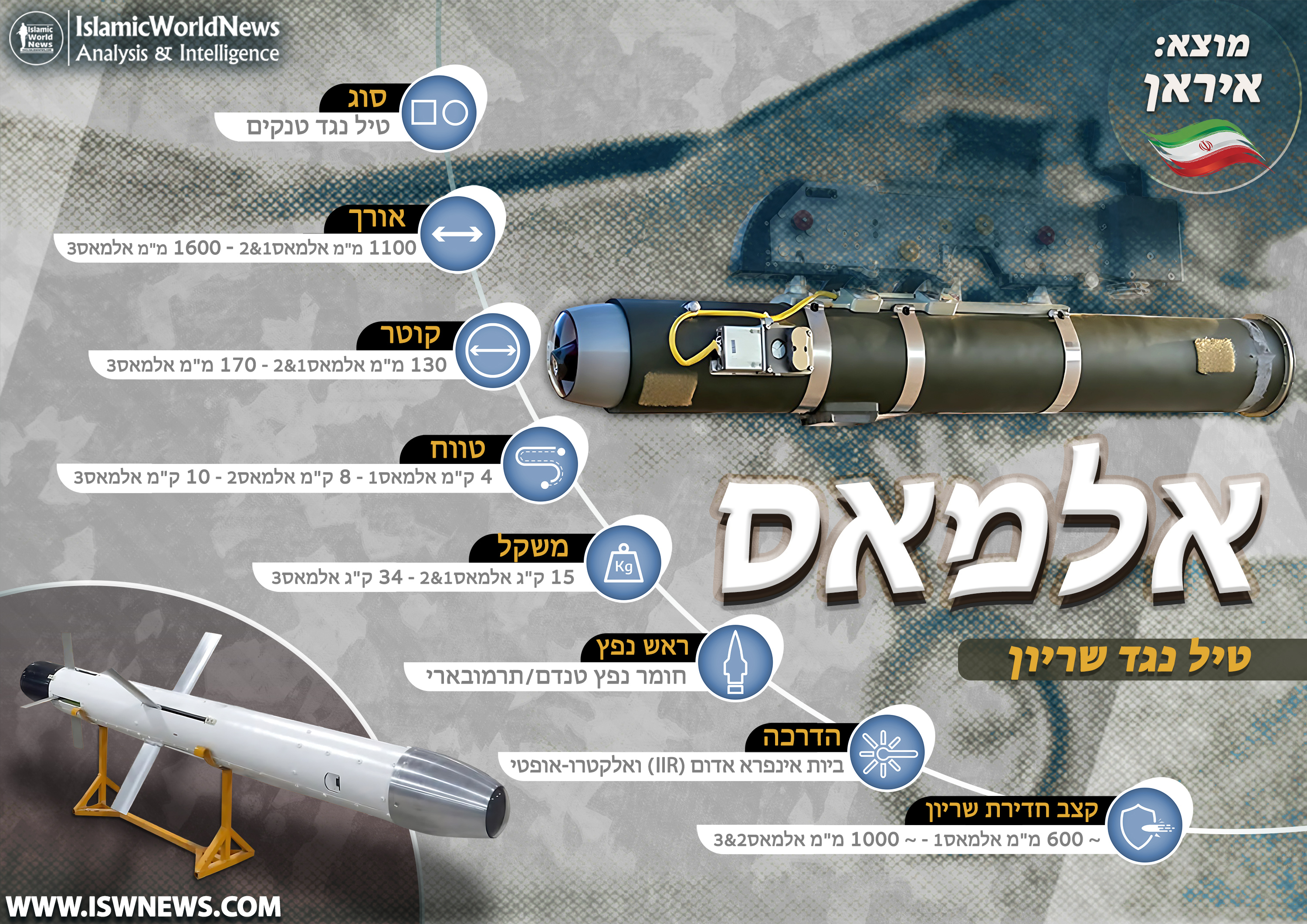





Comment